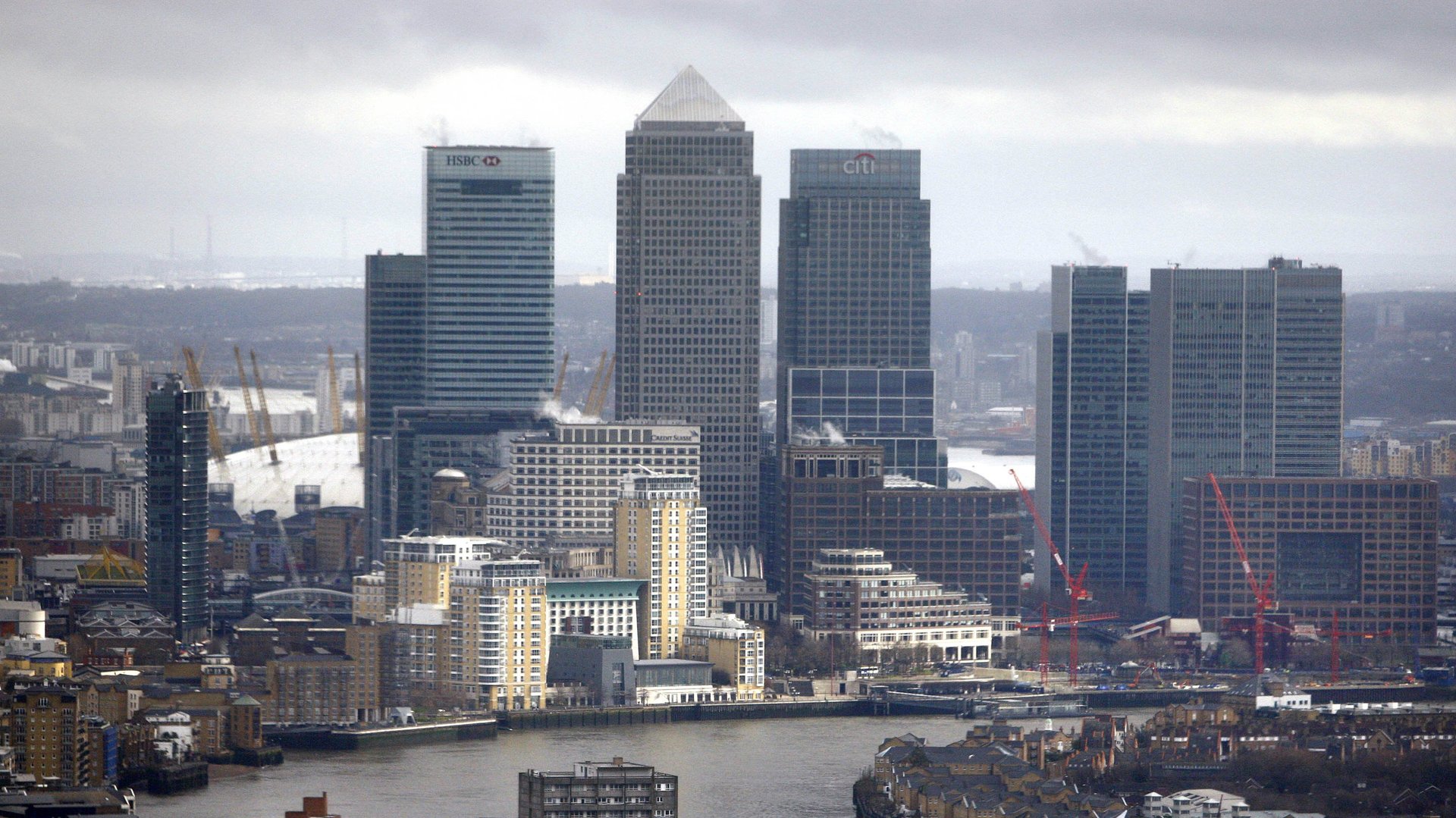One of the world’s largest banks wants to rip up the economic rulebook and downplay GDP
There is a growing chorus of economists who say it’s time to stop using gross domestic product as the prevailing measure of growth and economic progress. Barclays, one of the world’s largest banks, just joined in.


There is a growing chorus of economists who say it’s time to stop using gross domestic product as the prevailing measure of growth and economic progress. Barclays, one of the world’s largest banks, just joined in.
Dissatisfaction with GDP is not new, with people from the former King of Bhutan to Amartya Sen embracing alternative measures of economic progress, like happiness and human development indexes. Now, the backlash is going mainstream, as GDP’s shortcomings become clearer. The struggle to quantify the contribution of digital goods and services (which are often consumed for free) has created a challenge of “unprecedented scope and scale,” Barclays economists wrote in their flagship annual economic report published this week.
GDP counts the monetary value of goods and services produced over a certain time within a country. As economies become more digital and service-heavy, the economic indicators we use to measure growth and progress remain stuck in the manufacturing age. Macroeconomists are currently confronted with several puzzles around growth, inflation, and productivity, said Christian Keller, head of economics research at Barclays. Part of what’s puzzling them could be explained by technological changes and advancement leading to the mismeasurement of both GDP and inflation, he told reporters at a briefing in London.
In basic economic theory, the price of a good is set at the marginal cost to produce it. While digital goods have a fixed cost at the start, often there are zero (or near zero) marginal costs. Digital products also don’t suffer from scarcity issues and are cheap or free to transport across large distances. The difficulty of pricing digital goods properly probably leads to an underestimation of GDP, which is measured by transactions that have stated values, Barclays says (as others have noted before).
The scale of the potential miscalculation is hard to judge. However, Barclays predicts that the gap will keep getting bigger as the digital economy expands. The bank’s analysts have some ideas for how GDP might better capture the true size of the modern economy, such as measuring the opportunity cost of digital goods and services—that is, valuing the time spent using a product or service. Alternatively, economists could work out a “shadow price” for a service, calculated by how much a person would be willing to be paid to give up a service.
There is also the issue of real GDP, or growth adjusted for inflation. This requires economists to separate price increases due to inflation from those linked to improvements in quality. Overstatements of inflation because of technological changes could be as large as 0.6% to 1% per year in the US and UK, according to Barclays.
The question Barclays economists are asking themselves, according to the report, is “whether output growth is still the most adequate way to define the success of policies.” Politicians need to consider alternative metrics as the basis of policy decisions. One example is the World Bank’s study on the wealth of nations, which emphasizes the sustainability of economic growth by considering resources like natural capital and human capital.
That said, even after coming to the conclusion that GDP is undercounted and inflation is overestimated, this hasn’t led to changes in how Barclays conducts its economic research. The analysts’ hands are tied, they say. “We are still looking at what policymakers are looking at,” said Ajay Rajadhyaksha, the bank’s head of macro research. “And the fact remains that financial markets still do react to the first and second and third revisions of GDP, especially if they are away from consensus.”
And so, GDP’s reign continues.